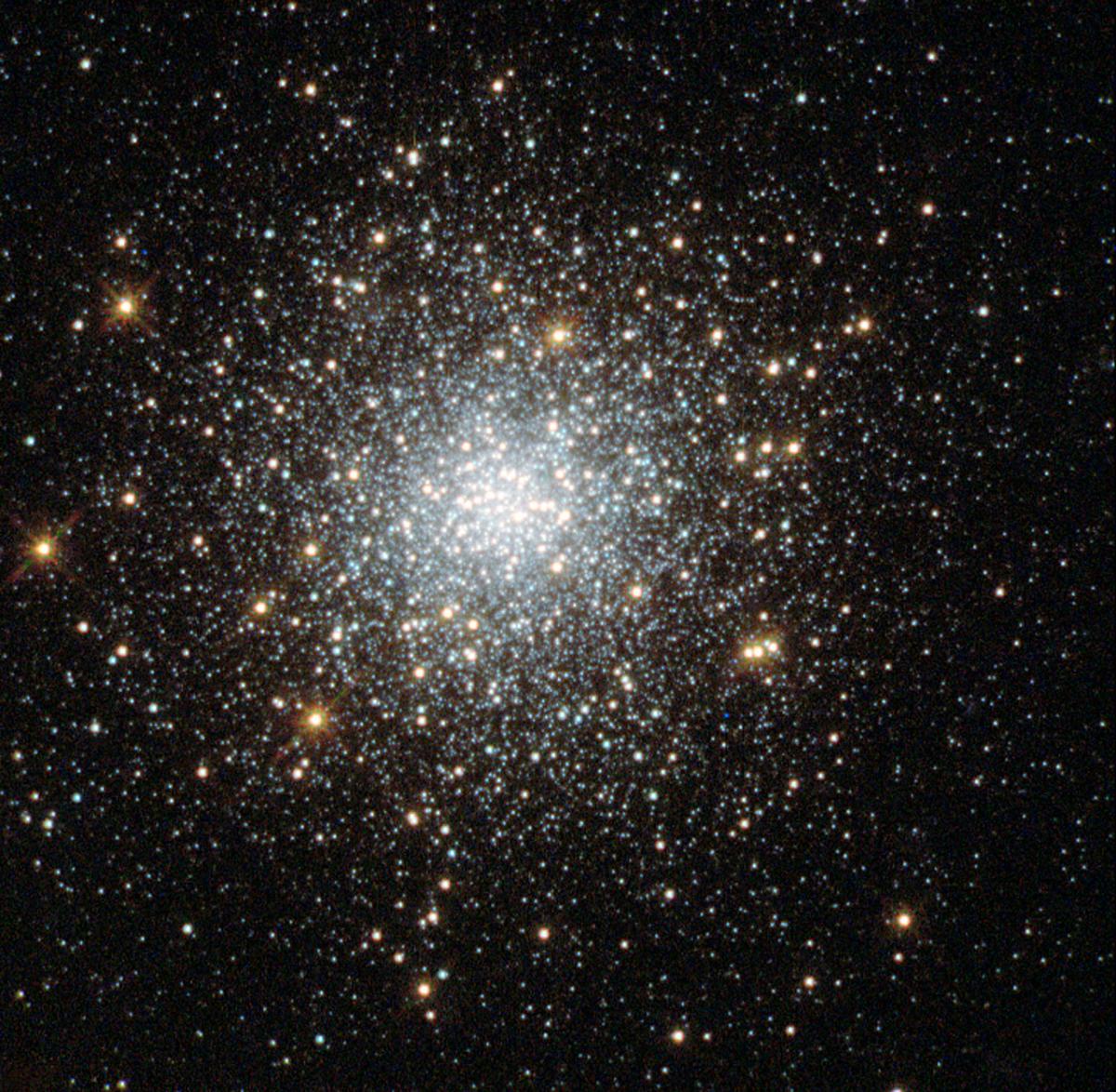Globular Clusters

Credit: NASA, ESA,
S. Larsen (Radboud University, the Netherlands)
A globular cluster is a huge, sphere of stars. The stars are held close together by gravity and all orbit the centre of the cluster. These clusters can be up to 300 light years in size and be made up of hundreds of thousands of stars.
Compared to open clusters, globular clusters are made of more stars and are much older. This means we can study them to learn how the first stars formed. Globular clusters are also more symmetrical than open clusters.
Globular clusters are often found in the star halos of spiral galaxies. A star halo is a huge sphere of stars which surrounds most spiral galaxies. This means the clusters are usually above or below the plane of our own flat galaxy, the Milky Way. We think there are about 150 globular clusters in the Milky Way.
Globular clusters can also be found within the edges of elliptical galaxies.
Examples of well-known globular clusters include M3 (the first object discovered by Charles Messier) and M13 (discovered by Edmond Halley).
In the 21st Century, astronomers discovered another type of star cluster. These are known as Super Star Clusters. These are massive (perhaps up to 50,000 solar masses worth of stars) clusters of young, very bright stars. It is thought that they could be globular clusters in the making

